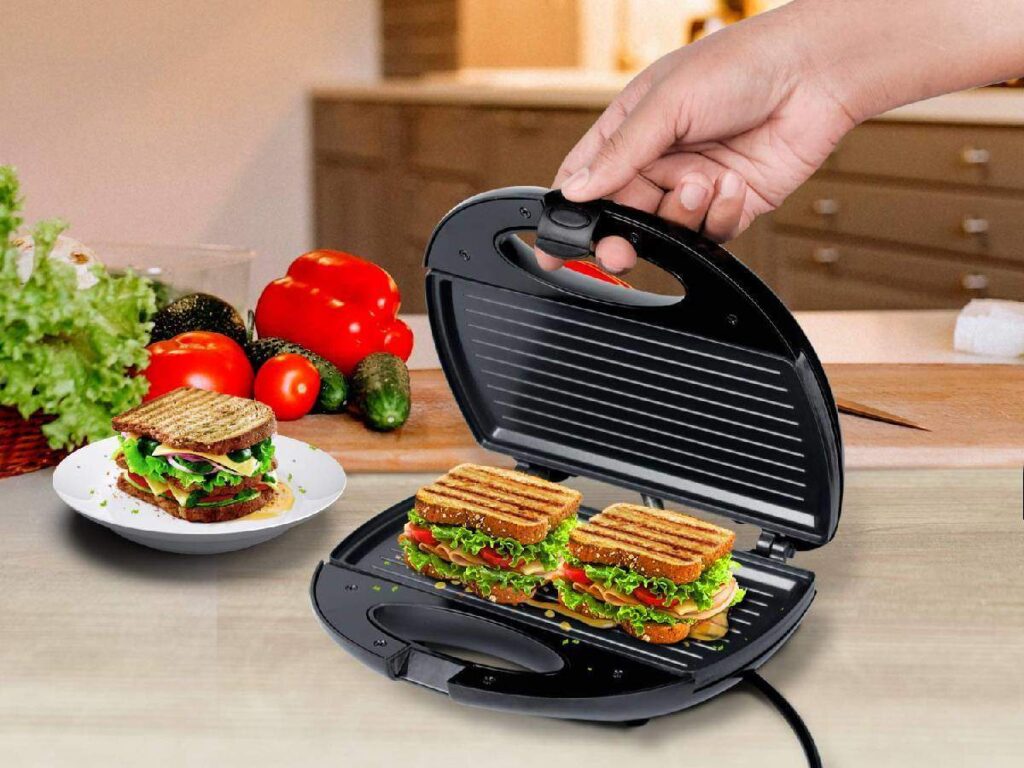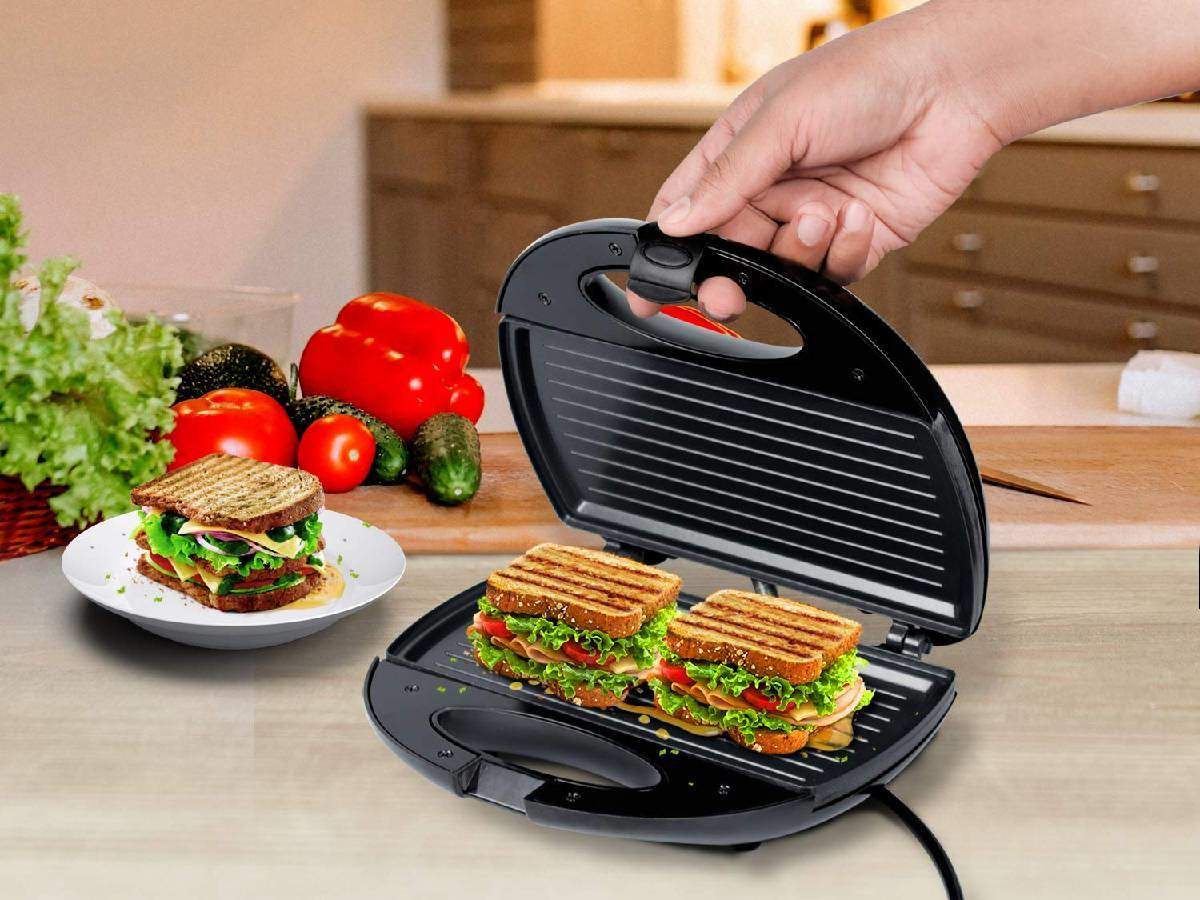
Why Sandwich Makers Should Sanitize Their Work Area Every Time
In the bustling world of food service, where speed and efficiency often reign supreme, it’s easy to overlook crucial details that ensure customer safety and maintain impeccable hygiene standards. One such detail, particularly vital for establishments serving sandwiches, is consistent and thorough sanitation. Sandwich makers should sanitize their work area every time they prepare an order, and this isn’t just a suggestion – it’s a cornerstone of responsible food handling. This article delves into the critical reasons why this practice is non-negotiable, exploring the potential risks, outlining best practices, and emphasizing the long-term benefits for both the business and its clientele.
We’ll go beyond basic cleaning tips, providing a comprehensive guide informed by industry best practices and expert recommendations. Whether you’re a seasoned deli owner, a budding sandwich artist, or simply a concerned customer, this guide offers valuable insights into the importance of a clean sandwich-making environment.
The Hidden Dangers of Unsanitized Sandwich Prep Areas
The seemingly innocuous act of preparing a sandwich can become a breeding ground for harmful bacteria and pathogens if proper sanitation protocols are ignored. Consider the myriad of ingredients involved: meats, cheeses, vegetables, condiments – each potentially harboring microscopic contaminants. These contaminants can easily transfer to the work surface, utensils, and, ultimately, the sandwich itself.
Cross-contamination is a significant concern. Imagine using the same cutting board for raw chicken and then, without sanitizing, using it to prepare a vegetarian sandwich. The risk of spreading harmful bacteria like Salmonella or E. coli is dramatically increased. Even seemingly harmless ingredients like sprouts can carry bacteria if not properly handled.
Furthermore, unsanitized surfaces can attract pests like flies and rodents, which are notorious for spreading diseases. A clean workspace is a deterrent to these unwanted visitors, protecting both your food and your reputation.
Understanding Sanitation vs. Cleaning: A Crucial Distinction
While cleaning removes visible dirt and debris, sanitation goes a step further by reducing the number of harmful microorganisms to a safe level. Think of it this way: cleaning is like wiping away crumbs, while sanitizing is like disinfecting the surface to kill the invisible germs that can make people sick.
Cleaning typically involves using soap and water to physically remove dirt and grime. This is an essential first step in the sanitation process. However, soap and water alone are not enough to eliminate all harmful bacteria.
Sanitizing requires the use of a chemical solution approved for food contact surfaces. These sanitizers effectively kill a wide range of bacteria and viruses, making the surface safe for food preparation. Common sanitizers include chlorine-based solutions, quaternary ammonium compounds (quats), and iodine-based sanitizers.
The key is to always clean before you sanitize. Sanitizing a dirty surface is less effective because the dirt can shield the microorganisms from the sanitizer. Always follow the manufacturer’s instructions for the proper concentration and contact time of the sanitizer to ensure its effectiveness.
Step-by-Step Guide to Sanitizing Your Sandwich-Making Area
Implementing a consistent sanitation routine is crucial for maintaining a safe and hygienic sandwich-making environment. Here’s a detailed guide to help you establish an effective protocol:
- Gather Your Supplies: You’ll need:
- Food-grade sanitizer (approved for use on food contact surfaces)
- Clean cloths or paper towels
- Spray bottle (for applying sanitizer)
- Dish soap and warm water
- Scrub brush or sponge
- Gloves (optional, but recommended)
- Clear the Area: Remove all food items, utensils, and other objects from the work surface.
- Wash the Surface: Using dish soap and warm water, thoroughly scrub the entire work surface to remove any visible dirt, grease, or food particles. Rinse with clean water.
- Prepare the Sanitizing Solution: Follow the manufacturer’s instructions to prepare the sanitizing solution. Ensure the concentration is correct for effective sanitation.
- Apply the Sanitizer: Using a spray bottle or clean cloth, apply the sanitizing solution to the entire work surface. Make sure to cover all areas, including corners and edges.
- Allow Contact Time: Let the sanitizer remain on the surface for the recommended contact time (usually specified by the manufacturer). This is crucial for the sanitizer to effectively kill bacteria.
- Air Dry: Allow the surface to air dry. Do not wipe it dry, as this can recontaminate the surface.
- Sanitize Utensils: Wash and sanitize all utensils, cutting boards, and other equipment used in sandwich preparation.
- Wash Hands: Thoroughly wash your hands with soap and water before and after sanitizing the work area.
Choosing the Right Sanitizer for Your Sandwich Shop
Selecting the appropriate sanitizer is essential for ensuring effective sanitation. Here are some common types of sanitizers used in food service:
- Chlorine-Based Sanitizers: These are effective against a wide range of bacteria and viruses and are relatively inexpensive. However, they can be corrosive to some metals and may have a strong odor.
- Quaternary Ammonium Compounds (Quats): Quats are odorless, non-corrosive, and effective against many microorganisms. However, they can be less effective against certain viruses and may leave a residue on surfaces if not properly rinsed.
- Iodine-Based Sanitizers: Iodine-based sanitizers are effective against a broad spectrum of microorganisms and are less corrosive than chlorine. However, they can stain surfaces and may have a strong odor.
- Peroxyacetic Acid (PAA): PAA is an environmentally friendly sanitizer that is effective against a wide range of microorganisms. It is often used in organic food processing.
When choosing a sanitizer, consider the following factors:
- Effectiveness: Ensure the sanitizer is effective against the microorganisms of concern in your environment.
- Safety: Choose a sanitizer that is safe for use on food contact surfaces and will not harm employees.
- Cost: Consider the cost of the sanitizer and its dilution rate.
- Ease of Use: Choose a sanitizer that is easy to use and requires minimal training.
Always consult with your local health department for guidance on approved sanitizers and proper usage.
Frequency Matters: How Often Should You Sanitize?
The frequency of sanitizing your sandwich-making area depends on several factors, including the volume of business, the types of ingredients used, and the potential for contamination. However, a general rule of thumb is to sanitize the work area between each sandwich preparation, especially when switching between different types of meats, cheeses, or vegetables.
Here’s a more detailed breakdown of recommended sanitization frequencies:
- Between Each Sandwich: This is especially important when preparing sandwiches with different ingredients or for customers with allergies.
- Every Four Hours: Even if you’re preparing the same type of sandwich all day, sanitize the work area at least every four hours to prevent the buildup of bacteria.
- After Handling Raw Meats or Poultry: Immediately sanitize the work area after handling raw meats or poultry to prevent cross-contamination.
- After Cleaning Up Spills: Always sanitize the area after cleaning up spills of food or liquids.
- At the End of Each Shift: Thoroughly clean and sanitize the entire work area at the end of each shift, including all equipment and utensils.
Remember, consistency is key. Establish a clear sanitation schedule and ensure that all employees are trained on the proper procedures.
The Long-Term Benefits of a Sanitized Workspace
While sanitizing your sandwich-making area may seem like a time-consuming task, the long-term benefits far outweigh the effort. A clean and hygienic workspace can:
- Reduce the Risk of Foodborne Illness: This is the most important benefit. Proper sanitation can prevent the spread of harmful bacteria and viruses that can cause foodborne illness.
- Protect Your Reputation: A clean and well-maintained establishment can enhance your reputation and attract more customers. Conversely, a dirty or unsanitary environment can damage your reputation and drive customers away.
- Improve Employee Morale: Employees are more likely to take pride in their work and be more productive in a clean and organized environment.
- Reduce Waste: Proper sanitation can help prevent food spoilage and reduce waste.
- Comply with Health Regulations: Regular sanitation is essential for complying with local health regulations and avoiding costly fines or closures.
Expert Insights on Maintaining a Safe Sandwich-Making Environment
According to leading experts in food safety, a proactive approach to sanitation is crucial. “Waiting until there’s a problem is too late,” says Dr. Emily Carter, a food safety consultant with over 20 years of experience. “Establishments should implement a comprehensive sanitation program that includes regular cleaning, sanitizing, and employee training.”
Another key recommendation is to use a three-compartment sink for washing, rinsing, and sanitizing dishes and utensils. This ensures that items are thoroughly cleaned and sanitized before being used again.
Furthermore, experts emphasize the importance of proper handwashing. “Handwashing is the single most effective way to prevent the spread of germs,” says Sarah Jones, a certified food safety manager. “Employees should wash their hands frequently, especially after handling raw meats, using the restroom, or touching their face.”
The Role of Proper Equipment and Design
The equipment used in sandwich preparation plays a significant role in maintaining a sanitary environment. Stainless steel surfaces are ideal due to their durability, ease of cleaning, and resistance to bacteria growth. Cutting boards should be made of a non-porous material that can be easily sanitized. Color-coded cutting boards can help prevent cross-contamination between different food groups (e.g., red for raw meat, green for vegetables).
The layout of the sandwich-making area should also be designed to promote cleanliness. Ensure there is adequate space for employees to work without crowding, and provide easy access to handwashing stations and sanitizing solutions. Proper ventilation is also important to prevent the buildup of moisture and odors.
Training Your Staff: The Foundation of Food Safety
Even with the best equipment and sanitation protocols, a sandwich shop cannot maintain a safe environment without proper employee training. All employees involved in sandwich preparation should be thoroughly trained on the following topics:
- Basic Food Safety Principles: Understanding the causes of foodborne illness and how to prevent it.
- Proper Handwashing Techniques: Washing hands frequently and correctly.
- Sanitation Procedures: Cleaning and sanitizing work surfaces, equipment, and utensils.
- Cross-Contamination Prevention: Avoiding the transfer of bacteria between different food groups.
- Proper Food Storage: Storing food at the correct temperatures to prevent spoilage.
- Personal Hygiene: Maintaining good personal hygiene habits, such as wearing clean clothing and keeping hair restrained.
Regular refresher training is also important to reinforce food safety principles and ensure that employees are up-to-date on the latest best practices.
Elevating Your Sandwich Shop: The Importance of a Clean Work Area
In conclusion, the practice of ensuring that sandwich makers should sanitize their work area every time they prepare a sandwich is more than just a guideline; it’s a fundamental requirement for any food service establishment committed to safety, quality, and customer satisfaction. By understanding the risks associated with unsanitized surfaces, implementing effective cleaning and sanitizing protocols, and prioritizing employee training, sandwich shops can create a safe and hygienic environment that protects their customers, their reputation, and their bottom line.
Take action today by reviewing your current sanitation practices and implementing any necessary improvements. Your customers will appreciate the extra effort, and you’ll have peace of mind knowing that you’re doing everything possible to provide them with safe and delicious sandwiches. Share this guide with your staff and colleagues to promote a culture of food safety in your workplace.

